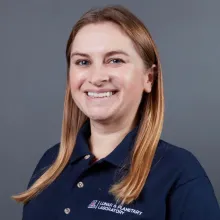What’s shaking on the Moon? What we can learn from earthquakes on the Moon
When
Where

Dr. Angela Marusiak
Assistant Research Professor
Over 50 years ago, Apollo astronauts installed the first extraterrestrial seismometers on the lunar surface. These instruments recorded thousands of moonquakes (earthquakes on the Moon). Now, we’re heading back to the Moon with modern seismometers as part of the Artemis missions. Here I discuss what we learned from Apollo, what we can learn from Artemis, the implications for future exploration, and how the University of Arizona is involved.
Assistant Research Professor Angela Marusiak studies how seismology and seismic instrumentation can be used to explore bodies in our solar system. Dr. Marusiak is on the team that is building seismometers for the Artemis III Lunar Environment Monitoring Station (LEMS) suite. LEMS is a compact, autonomous seismometer suite that will be deployed by the Artemis astronauts. LEMS will conduct continuous, long-term monitoring of the seismic environment, namely ground motion from moonquakes, in the lunar south polar region. It will characterize the regional structure of the Moon’s crust and mantle, which will add valuable information to lunar formation and evolution models. LEMS is one of two Artemis III instruments that have LPL faculty connections. Dr. Marusiak was a member of the NASA Mars InSight Lander team focused on detecting deep structure, including the size of the martian core. Her objective as a member of NASA's Dragonfly mission to explore Saturn's moon, Titan, is to learn how clathrates may alter the internal structure and seismic response of Titan.
Learn more about Assistant Research Professor Angela Marusiak.
For more information, visit the LPL Evening Lecture Series page.

